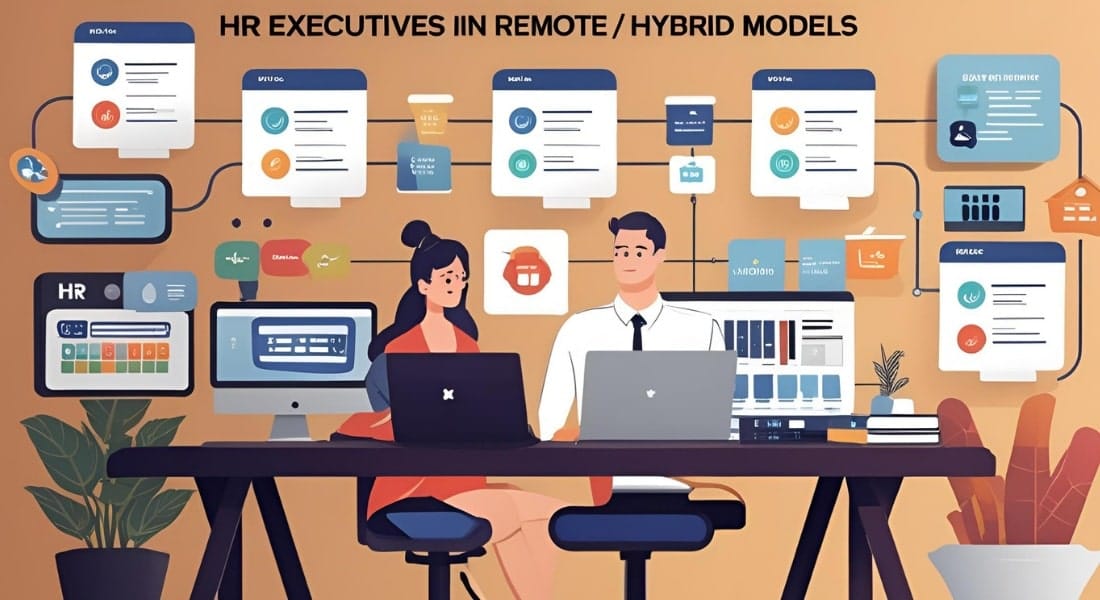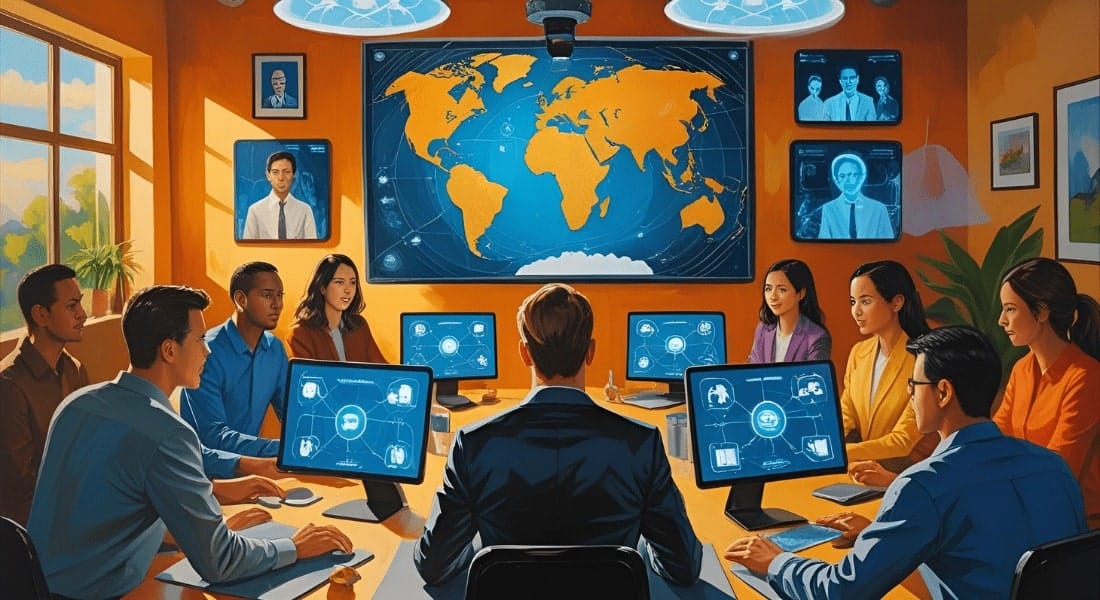The shift to remote and hybrid work is no longer a temporary trend—it’s a fundamental reshaping of the modern workplace. In this new landscape, the HR executive’s role has evolved from a traditional administrative function to a strategic linchpin essential for organizational success. A human resources leader is now the primary architect of culture, productivity, and employee well-being in a distributed environment. As companies navigate the complexities of managing teams across different locations, the talent manager or workforce strategist is tasked with future-proofing the organization. This article explores the critical responsibilities, challenges, and strategies that define effective HR leadership for distributed teams.
The New Workforce Landscape: Beyond the Office Walls
The post-pandemic era has solidified the permanence of flexible work arrangements. Organizations now operate under two primary models:
- Fully Remote: All employees work from a location of their choosing, with no central physical office.
- Hybrid: Employees split their time between working in a central office and working remotely.
While both models offer flexibility, they present unique challenges. A virtual workplace requires a deliberate approach to foster connection and collaboration, which can otherwise happen organically in an office. Moreover, the key difference between hybrid and fully remote setups lies in the potential for proximity bias—where in-office employees are favored over their remote counterparts. A skilled employee relations head must proactively address these disparities to maintain fairness and morale. The impact on employee engagement, collaboration, and performance is significant, demanding a complete overhaul of traditional management practices.
Core Responsibilities of HR Executives in Remote/Hybrid Models

The duties of an HR leader have expanded significantly. A modern workforce strategist must excel in several key areas to effectively manage a distributed team.
Redefining Hiring and Onboarding
First impressions matter, especially in a virtual setting. The HR executive must design a seamless digital-first recruitment and onboarding process. This includes:
- Leveraging digital HR tools like applicant tracking systems (ATS) and video interviewing platforms.
- Creating a structured virtual onboarding program that integrates new hires into the company culture.
- Ensuring new employees have the necessary technology and resources to succeed from day one.
Building Culture in a Digital-First Environment
Organizational culture can no longer be built through shared physical space. The HR leader is now the chief culture officer, responsible for intentionally cultivating a sense of community and belonging among distributed teams. This involves:
- Establishing clear communication norms and channels.
- Organizing virtual team-building activities and social events.
- Championing company values through recognition programs and consistent messaging.
Overseeing Compliance, Payroll, and Policies Across Geographies
Managing a workforce spread across different states or countries introduces significant legal and financial complexities. The HR executive must ensure compliance with varying labor laws, tax regulations, and payroll requirements. Developing clear and equitable flexible work policies is crucial to avoid legal pitfalls and ensure all employees are treated fairly, regardless of their location.
Managing Performance, Productivity, and Accountability
In a remote or hybrid model, performance management must shift from a focus on hours worked to results achieved. A key responsibility for the talent manager is to implement a robust performance management system that emphasizes outcomes. This includes:
- Setting clear goals and expectations for all employees.
- Utilizing productivity tracking tools that respect employee privacy.
- Training managers on how to effectively lead and evaluate remote teams.
Challenges HR Leaders Face

Hybrid workforce management is not without its obstacles. HR executives must navigate several common challenges to build a thriving distributed team.
- Communication Barriers: Without face-to-face interaction, misunderstandings can arise more easily.
- Digital Fatigue & Mental Health Concerns: Constant screen time and the blurring of work-life boundaries can lead to burnout.
- Retention and Turnover: Employees in remote setups may feel less connected to the organization, making them more susceptible to leaving.
- Aligning Organizational Culture with Flexibility: Ensuring a consistent and inclusive culture for both in-office and remote employees is a significant challenge.
Best Practices & Strategies for HR Executives
To overcome these challenges, forward-thinking HR leaders are adopting a range of innovative strategies and tools.
Leveraging HR Tech
The right technology is essential for managing a distributed workforce. Key digital HR tools include:
- Human Resource Information Systems (HRIS): To centralize employee data and automate administrative tasks.
- Collaboration Tools: Such as Slack, Microsoft Teams, and Asana to facilitate seamless communication and project management.
- Performance Management Software: To track goals, provide continuous feedback, and conduct fair performance reviews.
Implementing Flexible Policies While Ensuring Fairness
Creating a successful hybrid model requires a thoughtful approach to policy-making. The HR executive should develop clear guidelines on work hours, communication expectations, and in-office requirements. Another critical factor is ensuring these policies are applied equitably to prevent any perception of favoritism.
Promoting Employee Well-being and Inclusivity
A focus on employee well-being is paramount in a remote or hybrid environment. HR leaders should:
- Offer mental health resources and support programs.
- Encourage regular breaks and flexible schedules to prevent burnout.
- Promote diversity, equity, and inclusion initiatives that make all employees feel valued and respected.
Creating Training & Development Opportunities in Virtual Formats
Professional growth should not be limited by physical location. HR executives must invest in virtual training and development programs, such as e-learning modules, webinars, and virtual mentorship opportunities, to support the career advancement of all employees.
Future Outlook

Looking ahead, the role of the HR executive will continue to evolve with advancements in technology and changing workforce expectations.
- AI and Automation: These technologies will play an increasingly important role in hybrid workforce management, from automating recruitment processes to providing data-driven insights on employee engagement.
- Data-Driven Decisions: The ability to analyze workforce data will be crucial for making informed decisions about talent management, productivity, and organizational design.
- Sustainability of Remote-First Organizations: The long-term success of remote and hybrid models will depend on the ability of HR leaders to build a strong, resilient, and connected organizational culture.
Conclusion: The Future-Ready HR Leader
The role of the HR executive has been irrevocably transformed. It is no longer a support function but a strategic driver of business success in the new world of work. Effective remote team leadership requires a unique blend of empathy, technological savvy, and strategic foresight. From building a vibrant organizational culture in a virtual environment to navigating complex compliance issues, the human resources leader is at the heart of the modern, flexible workplace. Their ability to adapt and innovate will ultimately determine an organization’s ability to thrive.
Is your HR leadership equipped to meet the demands of a hybrid and remote future? It’s time to audit your strategies and empower your HR executives to build a resilient, engaged, and high-performing distributed workforce.
If you’re ready to find the strategic leader who can navigate these challenges, schedule a confidential consultation with our HR executive search experts today.


